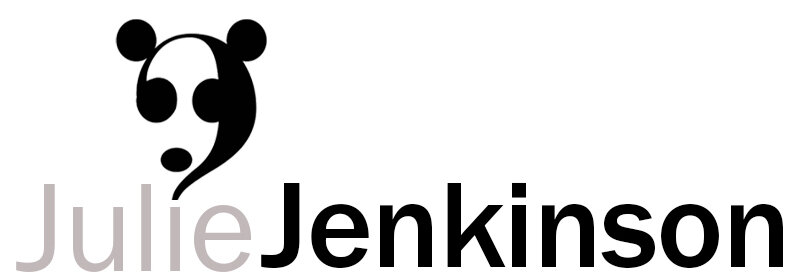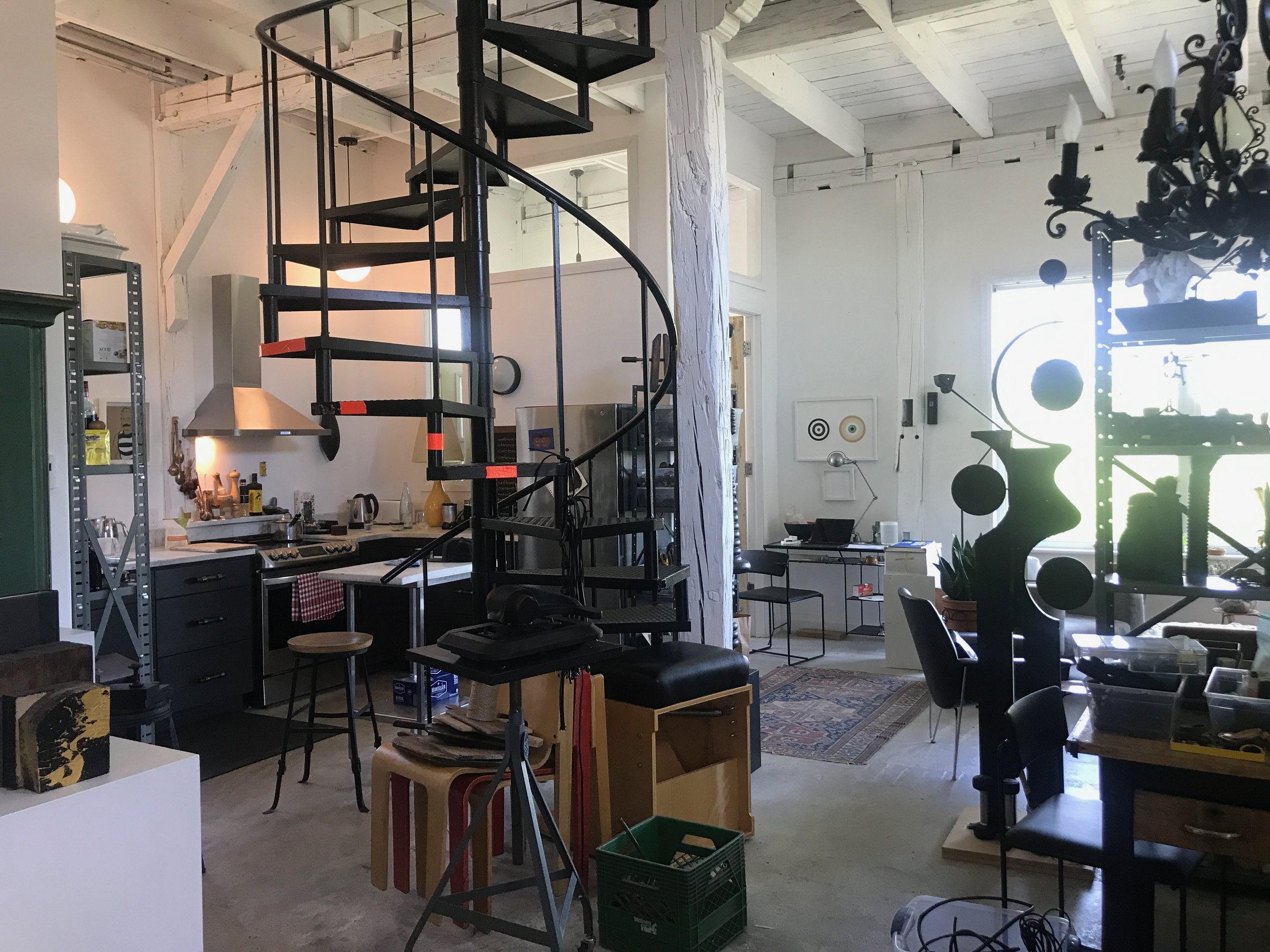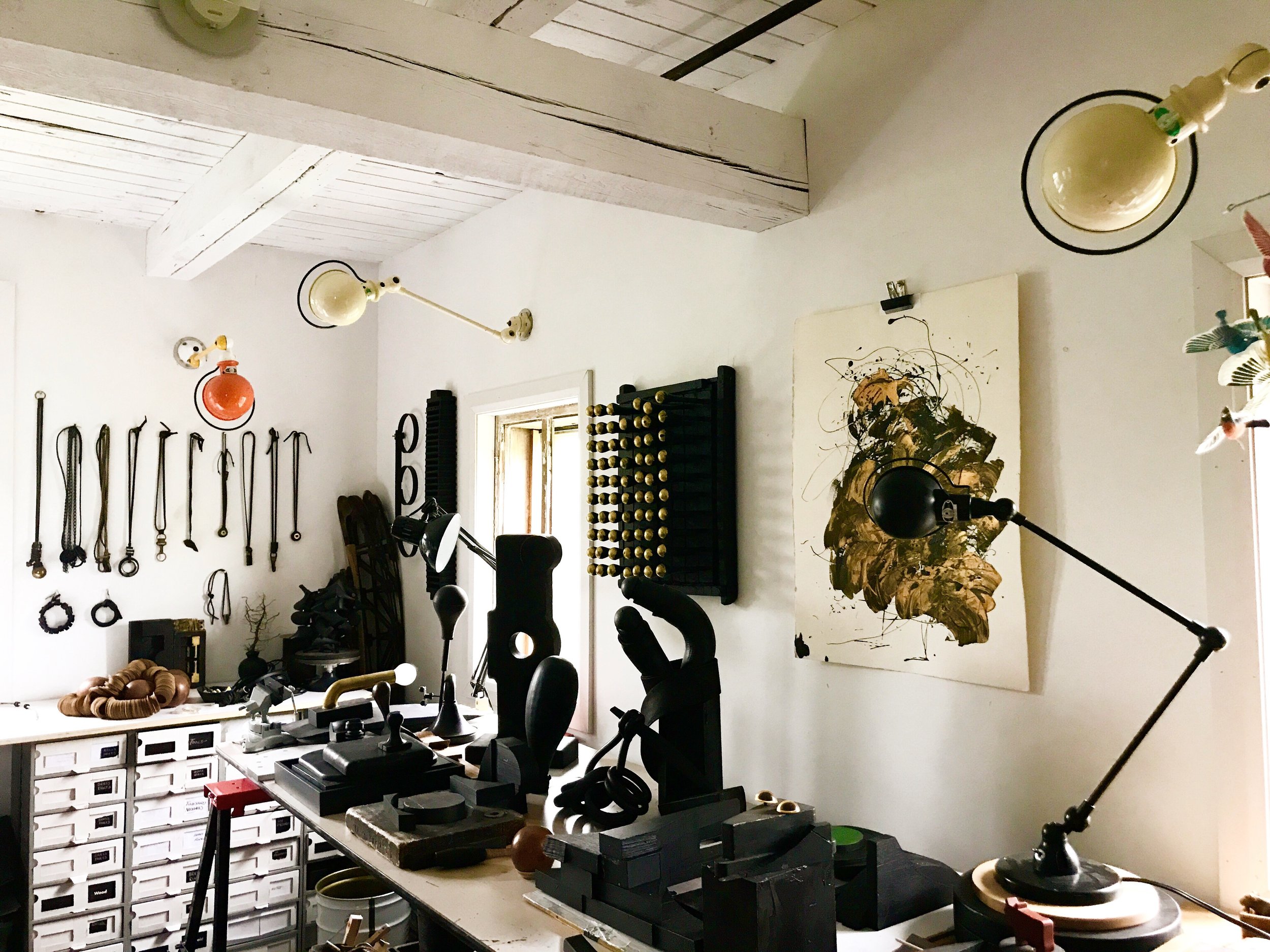Weaving and Winding Into the Wreck:
Julie Jenkinson’s Assemblage Art
I came to explore the wreck.
…I came to see the damage that was done
and the treasures that prevail.
I stroke the beam of my lamp
slowly along the flank
of something more permanent
than fish or weed
— Adrienne Rich, “Diving into the Wreck”
The assemblage art of Julie Jenkinson is poetic and performative, articulating its gesture through metaphor. In her hands the found object—wreckage rescued and restored—adumbrates, spiraling through its many lives, a palimpsest. Salvaged and defamiliarized, the work hinges on its capacity to integrate, reconnect, and soothe even as it unsettles, fractures, and subverts. Certainly, Jenkinson shares something with the aleatory experiments of the Dadaists and with the wonderous uncanny of the Surrealists. Yet, she has more in common with the lyrical defiance of Louise Nevelson and particularly with the lesser-known modernist poets and assemblage artists Mina Loy and Baroness Elsa von Freytag Loringhoven.
From her sculptural jewelry to her furniture and large-scale installations, Jenkinson lets the hidden folds shine. The assiduity with which she scours, collects, and neatly categorizes discarded postindustrial materials—bolts and fasteners, dowels and doll parts—belies the uncalculated intuition that drives her creative enterprise and the archetypal metaphors it yields. “It’s the wreck,” as poet Adrienne Rich writes, “and not the story of the wreck.” A revisionist feminist manifesto, Rich’s “Diving into the Wreck” is a poem about patriarchal oppression and the erasure of women. Its exploration dissolves the boundaries of gender and meaning. Like the poet, Jenkinson’s aesthetic associations divest themselves of exclusionary signification. In metaphor, meaning both accrues and severs and through her finding, Jenkinson’s objects perpetually reinvent themselves. “Metaphor invents a space of meaning that didn’t exist beforehand…,” explains French psychoanalyst Anne Dufourmantelle, “it is risk incarnated within language itself.”
As poetic sculptor then, Jenkinson cultivates this linguistic and semantic risk by diving into the generative abyss of the in-between—the liminality of both/and. Held to the light of Jenkinson’s intuition, the diaphragm of a piano becomes model ships tuned to the frequency of a new wave. Lightbulbs coil into eye sockets beaming their discerning equilibrium across the room. Marine mooring becomes a gourmet cake, and sometimes licorice, but these are only momentary touchstones susceptible to the projections we bring—the recognitions we can’t quite place but know, in a visceral way, are there. In viewing, we go somewhere difficult to locate—a somewhere that vanishes upon arrival. But, for the artist, this inability to place is the destination.
“This is the place,” continues Rich’s poem:
And I am here, the mermaid whose dark hair
streams black, the merman in his armored body.
We circle silently
about the wreck
we dive into the hold.
I am she: I am he
As it does for Rich, the liminality of metaphor allows Jenkinson to flex against the confines of gender in playfully subversive, yet deeply metaphysical ways. The leather and rubber of her work with its erotic connotations is also part of the netting she has woven to let the mythos of identity expand. Indeed, Jenkinson is both a diviner and a diver circling the wreck, knowing where to look and what to find.
When I visit Jenkinson’s studio in Northumberland County just outside Toronto, I arrive in stages. Hidden in plain sight like the materials she works with, her studio appears at once inside and out of time. Perched on an acreage, lush and teeming from summer rain, the grounds instantly recalibrate me. A cathedral of bird song confronts me as I step out of my car and my lungs expand. The spaciousness unmoors me. Even before entering, the largesse of Jenkinson’s aesthetic insists itself. Her objects, even when dimensionally small, assert their heft and volume.
When I do enter, I take a step back to look up. A commanding spiral staircase pirouettes in the centre of the studio which doubles as the artist’s home. It whirls and lifts even as it descends. Rescued from the decommissioned Millbrook Correctional Facility, a maximum-security prison, the staircase is a rune. From its panoptic heights, the winding helix echoes the perpetual becoming of Jenkinson’s oeuvre. It’s a body of work that watches, confronting the viewer confronting themselves. Indeed, spirals and springs effect a sacred geometric coil through much of Jenkinson’s work including her latest piece, Wild West. Just about to be crated, and hanging 14 feet from the ground, the work spreads its agile wings against the fixity of stone wall and scaffolding. It is Jenkinson’s largest sculpture to date, commissioned by the renowned international design studio Yabu Pushelberg for the lobby of a hip hotel in downtown Los Angeles. Although hanging, the piece performs, anatomized by the ghosts of original context.
In Wild West, Jenkinson’s dive turns skyward where her net catches celestial flotsam—bits of the planet knocked loose by solar flares. In this woven sculpture, the artist’s integrationist ethos is in full force. Rubber tubing, both flexible and sturdy, is transformed into a mythic exploration of freedom and discovery. It is a resilience in the face of colonizing encroachment on the landscape, the self, and the cosmos. Bridging the organic and inorganic, the netting turned wings are at once poised for flight and ready to wrap the viewer in a feathered embrace. Yet, the piece subverts the trope of manifest destiny suggested by its title, pulling to the forefront the viewer’s psychic landscape—the manifestation of a different destiny, primordial clues toward a reckoning with ourselves
and the planet.
The site-specific connotations of the work hover hotel-wise, as the woven wing-like sculpture becomes a refuge for the dreams of sleepers and somnambulists alike.
I’m transfixed before the Wild West. It seems to move but also to speak. Perhaps it’s the hand painted feathers and metallic springs soughing in the summer breeze, or perhaps it’s the ghosts of former inmates descending and ascending the stairs to my right, footfalls heavy with regret and resolve. And in that thought I realize Jenkinson hears her way through the wreck, listening to the history of the objects she finds with an open heart and without judgement. Bearing witness and valorizing the utterance. That listening is woven into the frame, a clairaudience she shares with the viewer in each synesthetic conjunction, honoring the space between the object and its telling—the intermezzo.
In the sister piece, Taillight, commissioned for the same LA hotel, wood, rubber, and leather leads evoke their binding as much as they bloom into escape. The sculpture tantalizes and tickles and some deep balance is restored within. The paradox of this restoration is at the core of Jenkinson’s ability to recognize metaphor before it emerges. As Dufourmantelle explains, metaphor depends upon this paradox:
Metaphor is a violent act. Violent because it’s irreversible. Nothing can undo the fact that one term was “compared” to another; and in the new term whereby the first was violently substituted, ousted, and traversed, will always remain the memory of an origin. Nonetheless, something will have been not repressed but lost. And in the possibility of such loss, there is life.
The loss inherent in each of Jenkinson’s found objects gives way to life, an animation that haunts all Jenkinson’s work. Taillight performs its draping—over the wall, over a body, longingly. The bejeweled offering of bangles become wind chimes become a single wing folded protectively, is as much body art as wall art. Necklaces as belts and lifelines –the tailing swish of a train, bustled. An LED light anchors the sway. Shift your stance and here a wing covers a nest of hatchlings, their thirsty heads lifted in a pocket of pointillist memories. The shape of a metaphor. Yet the shimmy of Taillight declares its love.
On a smaller but no less impactful scale, Jenkinson’s sculptural piece, Do You Think I Love You Too Much? is similarly declarative. Two wildly erect phalluses stare gleefully at the inevitably averted eyes of viewers. Overly eager, the piece is a sensuous performance of manspreading. The rubber piping, deliciously smooth, begs to be stroked and yet the work unsettles—forcing viewers (who dare to look) to examine their discomfort. The most revealing detail of the work, however, is the thin exposed wire that links the two towering phalluses. It appears as an oversight, as part of the making that should be hidden behind the otherwise immaculate surface. Yet, the small wire exemplifies the vulnerability of potency. In speaking your fears, the artist reminds us, they diminish.
Considered in conversation with Fifteen O’clock from her series “It Starts Out Rough,” Do You Think I Love You Too Much? might also be seen as a gendered inversion of the myth of Medusa—snakes that writhe and eyes that turn to stone. In a feminist reading of the myth, Medusa’s head is the Vagina Dentata and the myth a patriarchal warning and sublimation of divine feminine power. In Fifteen O’clock, disembodied limbs cast an eerie sundial shadow in which discarded children’s toys underscore the illusory monstrosity of Medusa’s snakes and the stoning effect of her looking. The work is also a commentary on the absurdity and commodification of bodily measurement—an insistent refusal to fit in time or place. Simultaneously, the splayed arms and legs also effect a hilarious wind-up wiggle of spiraling surprise—a Jaqueline-in-the-Box ready to pounce.
Like Rich, Jenkinson dives into the wreck of our making and escaping, our desires and fears, folding them over the liminal loom of metaphor where vanishing is an arrival. The spiraling of Jenkinson’s assemblages is generative and affirming. Breathing life into drowned mouths, Jenkinson resuscitates and reinvents. In diving she rises.
Suzanne Zelazo is a writer, editor, and educator in the visual and literary arts, as well as in sport. She holds a PhD in English with a specialty in female modernism and avant garde poetry and performance. Her projects seek to integrate creative expression and the body.
Wild West installed MOXY DTLA.
7x10'. Site specific commission. LA, 2023
Taillight, Installed, Moxy DTLA.
2.5' x 6'. Site specific illuminated commission.
LA, 2023
Do You Think I Love You Too Much?
Salvaged wood, found objects. 2018.
20"w x 19h x 7d"
Fifteen O’clock, 2019. Sculpture. Found objects,
19 x 19 x 9 in.
Julie Jenkinson, Studio, 2022.









